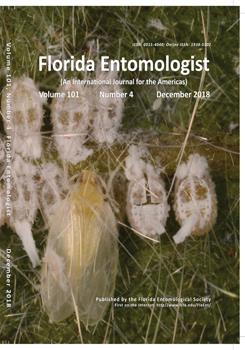Aphis gossypii Glover (Hemiptera: Aphididae) is one of the major pests of okra. Damage severity and high levels of infestation have led to widespread use of chemical insecticides. Okra is ranked fourth in Cameroon among vegetable crops on which chemical insecticides are applied. The objectives of this study were to evaluate resistant okra accessions identified in previous studies, to identify their categories of resistance, and to assess their effects on the non-preference, development, and reproduction of A. gossypii. Results showed that VI041210 was resistant to aphid infestation during the first season, and VI057245 and Gombo caféier were resistant during the second season. Kirikou and VI060794 had the highest yields during the first season, although Kirikou was moderately susceptible to aphid infestation. VI041210 was susceptible to aphid infestation during the second season but produced the highest yield. These results indicate that tolerance occurred in some of the accessions. Aphids did not discriminate between resistant and susceptible accessions, indicating that antixenosis (non-preference) was not a category of resistance found in these accessions. VI041210, VI057245, and Gombo caféier were the most resistant due to lower infestation levels, probably due to their antibiotic properties. Considering constitutive resistance, aphid development was poor, with the longest molting and generation time (To = 15.9) on VI057245 at the vegetative plant growth stage, leading to poor reproduction (lowest intrinsic and finite rates of natural increases: 0.25 and 1.3 aphids, respectively). Considering induced resistance, observed only in VI041210, nymphal development time was longest (14.2 d) leading to one of the lowest net reproductive rates at the vegetative and reproductive plant growth stages, 27.1 and 27.8, respectively. Thus, tolerance and antibiosis were categories of resistance found in these accessions, but antixenosis was not documented.
How to translate text using browser tools
1 December 2018
Influence of Okra (Abelmoschus spp.) Accessions on Colonization by Aphis gossypii (Hemiptera: Aphididae) and Their Effects on Aphid Biological Parameters
Albert Fomumbod Abang,
Ramasamy Srinivasan,
Sévilor Kekeunou,
Rachid Hanna,
Regine Kamga,
Charles-Felix Bilong Bilong

Florida Entomologist
Vol. 101 • No. 4
December 2018
Vol. 101 • No. 4
December 2018
antibiosis
antixenosis
development of Aphis gossypii
host plant resistance
reproductive performance of Aphis gossypii
tolerance to aphids




